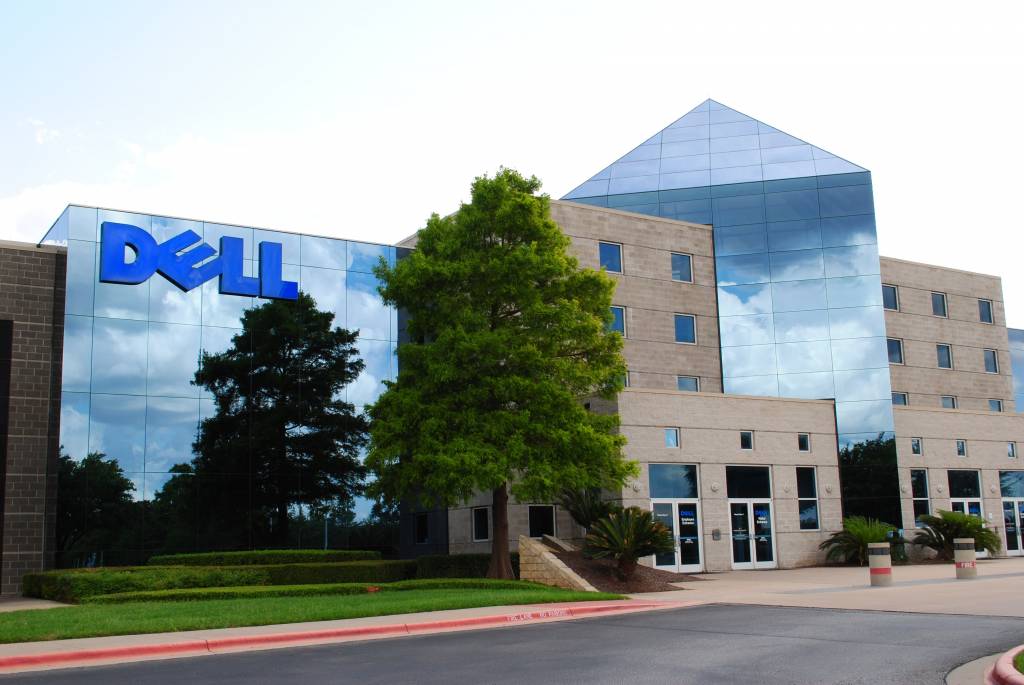|
Getting your Trinity Audio player ready...
|
A Buzzword That Changed Marketing
It comes as no surprise that today’s world is evolving and rapidly changing. This tendency is driven by several factors, including increasing competition, globalization, and technological progress. Together, these factors are creating a constant flow of disruptions in the markets that demand companies to quickly adapt to the ever-changing environment.
The same statement applies to the organizational processes, especially marketing. Nowadays, marketing agility has become a buzzword that refers to the ability to quickly adapt and respond to еру changes in customer behaviors, market conditions, and business processes. Still, this term is often misunderstood, and its role in the modern business landscape remains a disputable issue, as the concept is relatively novel in comparison to other practices.
Where Did We Start
4Ps: Control is Everything
Let’s start with traditional marketing. Everyone heard about the 4Ps: price, place, promotion, and product. This is a classical approach to the marketing strategy that emphasizes the use of the company’s capabilities to control the situation. Traditional marketing is also focusing on regulating the sales cycle, organizational message and brand in general.
As can be seen, tradition equals control. This was a viable approach back when enterprises were fully in control of the information about their products. These were the times when a company was deciding what kind of advertising to use — whether it’s TV, newspaper, or promotional material.
The Marketing Funnel
Consumers’ decision-making journey used to be more of a funnel. Traditionally, the marketing funnel consists of several elements: awareness, interest, consideration, intent, evaluation, and purchase. Thus, it presented a pretty simple and straightforward decision-making scheme for a customer. Awareness came through the use of marketing campaigns. Marketers applied a variety of methods to bring awareness to a potential customer, including direct mail, social media, viral campaigns among others. Interest is the part when a potential client becomes engaged with the marketing instruments, which led to individual research about a product or service. The consideration stage is apparent — a prospective consumer reaches out to find out more, and marketers respond. The intent stage is the phase where marketers were able to create a strong case for buying their product. Finally, during the evaluation stage, a potential customer is making a final purchase decision, which leads to the last step!
Definition of Agile Marketing Process
First things first — what is agile marketing? Primarily, it is the company’s ability to swiftly adapt and respond to the shifts in customer behaviors and market conditions. The definition shows a distinction from the traditional marketing practice in its own right. The thing is — agile marketing considers the competition and changes in customer behavior simultaneously. Even more, customer service is viewed as the top priority for companies that strive to become agile.
However, this approach is a radical shift from the traditional and comfortable practices that have been in use for decades.
The Importance of Marketing Agility for Businesses During Digital Transformation

Digital transformation is basically an integration of technologies into the whole business model to create additional value for both businesses and consumers. The availability of big data offers an opportunity to enhance all the business processes. So, digital transformation is focused on a continuous implementation of technology thus providing marketing specialists with a lever!
What is the lever? The answer is simple — the availability of considerable bulks of data results in an ability to predict different situations and their potential outcomes. Marketing that is reinforced by a constant inflow of information is becoming naturally agile as professionals are able to effectively monitor the situation and make adequate estimates and decisions. If an enterprise lacks capabilities to collect and effectively use big data, marketing consultancy services come into play.
Being agile in digital transformation is also beneficial for enterprises because the end result will considerably reduce the potential marketing expenditures while boosting the overall effectiveness of PR or marketing campaigns. This, in turn, allows allocating additional financial resources to other priorities.
Small businesses and startups may not possess the capabilities to actively implement digital transformation but they need to keep their marketing on point. If this is the case, a natural solution to the problem would be to delegate the task of creating a proper marketing plan to a marketing outsourcing company. The majority of startups actively use the help of outsourcers because a lack of specific industry knowledge is usually the reason why new businesses struggle or fail.
Marketing Agility: Challenges
Implementation of an agile methodology in the marketing department cannot be performed without some prior work. It is essential to take care of internal communications, infrastructure, and personnel just to prepare everything for the agile methodology as it requires excellent coordination of resources and cooperation of those involved. As a result, among the challenges associated with the agile marketing approach, resources and employees are the greatest ones.
Resources
Established businesses are often struggling with becoming agile in digital transformation due to several reasons. First of all, digital transformation is a time- and money-consuming process that is basically changing the way a company operates at large. So, the first challenge is to grab the scope of required changes and not to miss anything important.
From the perspective of time consumption, enabling agility in digital transformation is a lengthy process that demands acquisition of hardware and software as well as additional staff training. This process drains both time and money from a company thus making it a costly investment, especially if not done properly.
Dealing with this challenge is rather tricky as it necessitates the cooperation and involvement of senior management on every organizational level. In this way, it will be possible to cover all gaps in the transformation process. Digital transformation and implementation of agile marketing directly depend on the ability of a business enterprise to create a harmonic transition from the traditional practices to the new ones. This requires sufficient budgeting, time management, and coordination between senior management and employees. In this way, it will be possible to avoid over-expenditures and other adverse effects of bad resource utilization.
Resistance to Change
The second challenging factor is also quite obvious — enterprises with established corporate cultures usually share one common thing that is a desire to maintain the status quo. Basically, the creation of an agile marketing team can face a simple yet powerful barrier — resistance to change. Although some entrepreneurs overlook this factor, actually, it plays an important role in the organizational policy of a company.
This challenge is highly complex and requires an appropriate approach. Resistance to change is probably the single greatest barrier to the evolution of any enterprise. However, there are methods of overcoming resistance, and Dr. Kotter’s 8-step process for leading change is a perfect framework for this.
Similarly to the previous challenge, it is possible to overcome resistance to change through adequate management; although the focus should be on finding the most suitable candidates for the job while providing them with both intrinsic and extrinsic incentives to join and become a part of an agile team. So, assembling an agile marketing team will require highly efficient human resource management work and a set of incentives.
Benefits of Agility in Marketing
Agile marketing approach is beneficial for businesses because it provides for adaptability and flexibility. The thing is — a responsive company is able to adequately react to the changes in both internal and external environments. As a result, the ability to change course of action due to unpredictable situations is on the top level!
Quality Management
Generally speaking, agile management is a win-win strategy for any organization. It’s worth noting that the business environment becomes more complex every year, and this requires an appropriate response. That is why high-quality and flexible management is a must-have for any modern enterprise. A shared vision and goal can push forward many different decisions that may play out pretty nicely for the business, especially in marketing. Agile quality management provides a quite simple yet important advantage — a company is able to adequately assess demands of the target audience thus allocating resources in a proper manner. As a result, an enterprise will be able to function efficiently with the lowest possible costs. Furthermore, quality management implies an established feedback loop, which presents another advantage of agile marketing — an ability to quickly gather information.
Communication

The agile approach is directly connected to communication, including both internal and external channels. In terms of internal communication, agile processes benefit the marketing team because each and every member is focused on achieving a particular goal. Together, these small objectives make up a larger common aim through collaboration and shared workflows.
Communication leads to enhanced problem-solving capacity in a team. This is probably one of the most important merits of agile marketing. Effective communication equals improved problem-solving abilities that allow marketing teams to rapidly react to the changes within both internal and external environments. This, in turn, results in the development of an efficient marketing strategy that is customer-oriented.
Consumers’ Decision-Making Journeys Have Changed
Nowadays, a consumer decision-making process is not linear. Despite its obvious benefits, the availability of the Internet and everything that comes with it presents additional challenges for businesses. In this case, innovative technologies can be incorporated to address the arising issues for the company’s benefit.
Marketers were used to the traditional way of conducting business, but the situation has changed recently. Consumers pay meticulous attention to different product features that can either satisfy them or become a hindering factor. Today, the availability of innovative technologies has led to the creation of a new type of consumer.
This modern consumer has a different decision-making pattern. In fact, one’s purchasing journey appears to be much more complicated than it seemed before. So, you can expect the unexpected! People are quite knowledgeable of what is going on, especially regarding the activities of various companies online.
Instead of being a tunnel, a current decision-making journey is about an opinion on one’s own terms. The current journey is more like a multi-dimensional trip that is focused on identifying what is wrong and what is right. That is why product features and characteristics are not the determining factors in purchasing decisions — the focus has been switched to the brand’s public image and associations. Such dramatic changes are the reason why agility in marketing is highly beneficial in the modern realities.
How to Implement Agile Marketing in Your Organization
Strong Team

First things first — you need an agile marketing team! So, it is imperative to make sure that the team is ready to commit to the agile approach that can be quite stressful for some people. Mind that the choice of human resources matters.
Work in Sprints
This is the main reason why it is so important to assemble a correct team. The main feature of the agile marketing approach is an ability to work in sprints, which are basically these high-intensity rushes that have a limited timeframe, usually a week when it comes to marketing. To properly execute the sprint strategy, it is required to involve other team members into planning and adequately assess potential performance as well as possible areas for improvement.
Keep Track of Everything
In terms of an agile marketing approach, visualization is the easiest way to monitor the progress. Keeping track of the development is quite easy. It is possible to use basic things like sticky notes or specialized software. It depends on the facilities and capabilities of your business. Overall, the main goal is to be able to see both the individual progress of each team member and the general picture.
Collaboration and Communication
The agile method rests on effective communication and collaboration. That is why having proper communication channels is a must for any company that wants to succeed in its digital transformation agility. If your business does not possess such channels, maybe it is better to source the task to a digital marketing company. In this way, an enterprise will be able to reallocate resources to other crucial objectives thus keeping up the digital transformation.
Meetings
Usually, stand-up and scrum meetings are the best options out there, especially for an agile marketing team. Their main purpose is to keep track of what has been done, how it was done, and what has to be done next. These meetings should not take more than 30 minutes, but you should be able to discuss all the tasks, issues, and suggestions at hand. As a result, your agile marketing team will be able to stay updated on any changes both in terms of internal and external environments.
Examples of Success
Dell

A great example of agile marketing in action. Prior to transformation, Dell marketing department had an issue that many companies are dealing with — everybody is doing something slightly different. To overcome the problem, the department was reorganized to fit the agile inbound marketing approach. Hence, it was possible to create a unit that works on a basis of monthly sprints.
IBM

This famous company shifted to agile marketing as a part of its overall strategy. The corporation decided to use an approach that is basically all about small teams whose members have aligned skills, accountability, and focus. This way, every direction can be covered effectively. Sounds pretty simple but IBM was able to effectively distribute tasks among these teams while keeping them cross-functional.
Mozilla

This company is an interesting example of agile marketing practice in action, especially for those who are looking towards an enterprise-wide transformation. To deal with information hoarding that only hindered the organization, Firefox executives focused on improving the communication within company’s divisions thus eliminating inefficient procedures in favor of harmonized cooperation based on skill sets.
Aussie

This is a banking and financial company that was able to go agile in almost every way. For this purpose, the enterprise introduced practices aimed at facilitating communication and collaboration between all the departments out there. Aussie’s directors also expertly carried out a company-wide training program to provide its employees with proper understanding of the changes. All-in-all, Aussie is a great example of large-scale human resource management in action!
Why Agility is the Future of Marketing
The world is becoming more and more digitized thereby creating numerous opportunities for accessing information. Thus, companies are not dictating what a potential consumer will know — it is the consumer who has the power. It means that marketing has to be extra flexible and customer-oriented in order to sustain a competitive position in the market.
This is where agile marketing comes into play.
Digital transformation brings many important things to the table and facilitates the establishment of effective communication and task-tracking channels that can be used for highly agile and predictive marketing activities.
As a result, team flexibility and technological advances present a combination that can easily become a competitive advantage of any organization out there. All the information available suggests that communication, collaboration, and technology play a crucial role when it comes to any sort of change. This is especially true for digital transformation and agile practices.
Enhancing communication channels through technology and a flexibility-focused approach appears to be the universal way to enable agile practice in an organization. Still, you should remember that every company has its own set of factors, which determine what practices should or should not be enabled to become agile. In the end, everything depends on each particular business, so take time to explore your strong and weak sides — then you’ll find what’s specifically needed for creating an agile marketing department.










